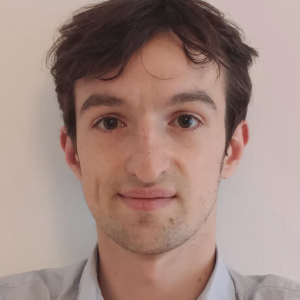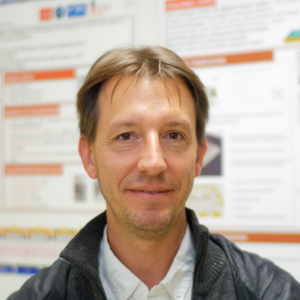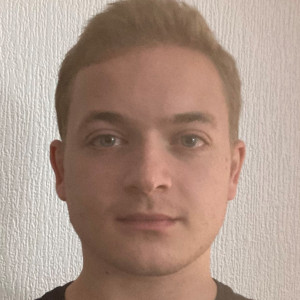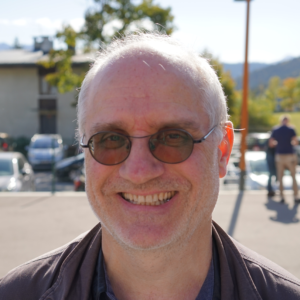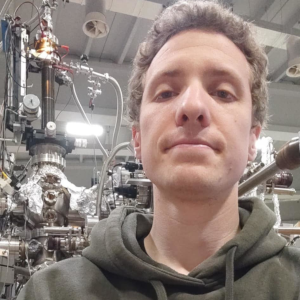Overview
The 2D spintronics team is developing the large area growth of 2D materials by molecular beam epitaxy (MBE). Our aim is to study fundamental magnetic and spin transport properties of 2D transition metal dichalcogenides down to the monolayer limit or in van der Waals heterostructures. The main research topics are two-dimensional magnetism, spin-charge interconversion phenomena, magnetic doping and the integration of 2D materials in devices. The strength of the team relies on its long experience in the physics of 2D materials and on a unique (in France and Europe) MBE platform to grow 2D materials and vdW heterostructures on large area.
Research topics
2D magnets
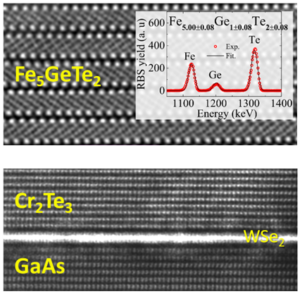
MBE growth of 2D ferromagnets and fundamental study of two-dimensional magnetism: effects of low-dimensionality (down to one monolayer) and low symmetries, manipulation by electric field and strain, proximity effects, topological effects, new spin textures (ex. skyrmions).
Spin-charge interconversion
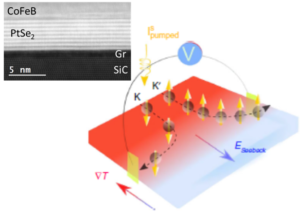
Fundamental study of spin-charge interconversion phenomena in 2D materials and van der Waals heterostructures using spin pumping, THz spintronic emission and spin-orbit torques.
Magnetic doping
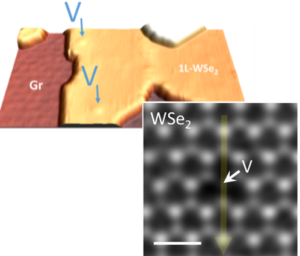
Development of magnetic and electrical doping to synthesize 2D diluted magnetic semiconductors (DMS) or to reach electronic bands with specific spin texture.
2D material integration
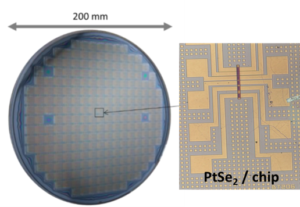
Integration of 2D materials in RF transistors, RF switches and memristors. Optimization of carrier mobility and electrical switching processes.
The team
Former members
Post-docs
- Minh-Tuan DAU (2016-2018)
- Emilio VELEZ-FORT (2019-2020)
- Mario RIBEIRO (2020-2021)
- Jules COURTIN (2022)
- Vincent POLEWCZYK (2023)
PhD
- Fabien RORTAIS (2013-2016)
- Thomas GUILLET (2017-2020)
- Quentin GUILLET (2020-2023)
- Khasan ABDUKAYUMOV (2020-2023)
Internships
- Takeo KOIKE (Sept.-Nov. 2017)
- Mohamed Husein (Mar.-Aug. 2022)
Projects
- ANR COME ON (2023-2025)
- ANR ELMAX (2021-2023)
- ANR-DFG MagSta2D (2023-2025)
- ANR NEXT (2024-2026)
- PEPR Microélectronique ADICT (2023-2027)
- Equipex 2D MAG (2021-2028)
- H2020 Graphene Flagship (-2023)
- H2020 EIC Pathfinder PLASNANO (2023-2025)
- H2020 FET-OPEN NANOPOLY (2018-2022)
- FLAG ERA MNEMOSYN
- ANR MAGICVALLEY (2018-2021)
- ANR GEMO (2008-2010)
- RTRA IMAGE (2009-2011)
- ANR SiGeSPIN (2014-2017)
- ANR MoS2ValleyControl (2015-2017)
- ANR TOP-RISE (2017-2020)
- Projet Phare CEA DRF-DRT 2D Factory (2015-2019)
- Projet CARNOT H2D3D (2017-2019)
Partners
- IRIG/PHELIQS, MEM, SYMMES, Grenoble, France
- CEA LETI, Grenoble, France
- Laboratoire Albert Fert, Palaiseau, France
- Institut NEEL, Grenoble, France
- Laboratoire Charles Coulomb, Montpellier, France
- Laboratoire de Physique de l’ENS, Paris, France
- LPCNO, INSA, Toulouse, France
- IJL, Nancy, France
- LPS, Orsay, France
- LNCMI, Toulouse, France
- Politecnico di Milano, Milan, Italy
- Forschungszentrum Jülich, Germany
- ICN2, Barcelone, Espagne
Recent news
- Development and optimization of large-scale integration of 2D material in memristors (December 05th, 2024)

Two-dimensional (2D) materials like transition metal dichalcogenides (TMD) are considered as key candidates to replace silicon in several technologies with enhanced performances. In this work, we address the two remaining challenges to reach their industrial ... - Post-doctoral position – spin-orbit torques in 2D ferromagnets (October 25th, 2024)

In the frame of the FlagERA project MNEMOSYN, coordinated by Spintec and in collaboration with 5 European institutions, Spintec laboratory is opening a postdoctoral researcher position. The candidate will investigate spin-orbit torques in FexGeTe2 2D ... - THz emission: a tool for studying the spintronic properties of 2D materials (June 17th, 2024)

By using THz spintronic emission, we could study the spin-charge conversion mechanisms in 2D materials. High crystalline quality 2D materials are grown by molecular beam epitaxy on large area and CoFeB is deposited on top ... - Seminar – Topological Spin Transport in Quantum Materials and Entanglement (April 15th, 2024)

On Monday May 13, 2024 at 14:00 we have the pleasure to welcome Prof. Stephan ROCHE (ICREA, Catalan Institute of Nanoscience and Nanotechnology (ICN2), CSIC, BIST). He will give us a seminar entitled : Topological Spin ... - Seminar – Ten Years of 2D Materials based Spintronics Research: Highlights and Future (April 15th, 2024)

On Tuesday May 14, 2024 at 14:00 we have the pleasure to welcome Prof. Stephan ROCHE (ICREA, Catalan Institute of Nanoscience and Nanotechnology (ICN2), CSIC, BIST). He will give us a seminar entitled: Ten Years of ...
Publications
For the full list of publications See the personal webpage of Matthieu JAMET, Alain MARTY and Céline VERGNAUD.

